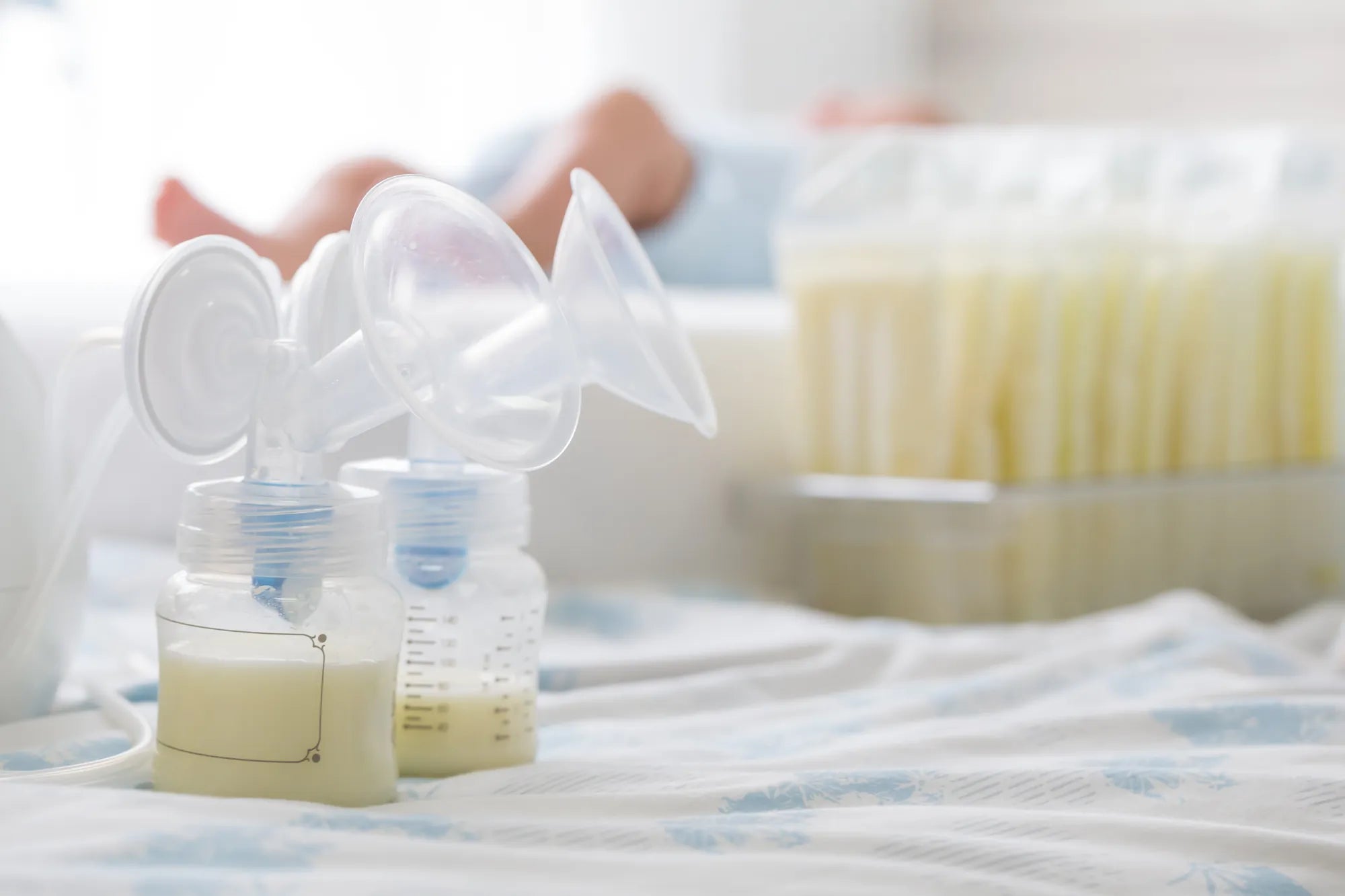Accueil
Pregnancy, Breastfeeding, and Pumping: The Ultimate Guide for Moms
Can You Add Fresh Breast Milk to Already Pumped Milk? Here's What You Need to Know

Can You Add Fresh Breast Milk to Already Pumped Milk? Here's What You Need to Know
For breastfeeding mothers, managing pumped milk can sometimes feel like a science experiment. One common question that arises is: Can you add fresh breast milk to already pumped milk? The answer is yes, but there are important guidelines to follow to ensure the safety and quality of the milk. This article dives into the details of combining breast milk, offering practical advice and expert insights to help you navigate this aspect of breastfeeding with confidence.
Understanding the Basics of Breast Milk Storage
Before combining fresh and pumped milk, it's essential to understand the basics of breast milk storage. Freshly expressed breast milk can be stored at room temperature, in the refrigerator, or in the freezer, depending on how soon you plan to use it. The temperature and storage time play a crucial role in maintaining the milk's nutritional value and safety.
Freshly pumped milk can be kept at room temperature (up to 77°F or 25°C) for about 4 hours. If stored in the refrigerator (at 39°F or 4°C or lower), it can last up to 4 days. For longer storage, freezing is an option, with breast milk remaining safe for up to 6 months in a standard freezer and up to 12 months in a deep freezer.
Can You Mix Fresh and Pumped Milk?
Yes, you can mix fresh breast milk with already pumped milk, but there are specific rules to follow. The key is to ensure that both types of milk are at the same temperature before combining them. Adding warm, freshly expressed milk to cold or frozen milk can cause temperature fluctuations that may compromise the milk's safety.
Here's how to do it safely:
- Cool the freshly expressed milk in the refrigerator until it reaches the same temperature as the pumped milk.
- Once both milks are at the same temperature, you can combine them in a single container.
- Label the container with the date of the oldest milk to ensure proper rotation and use.
Why Temperature Matters When Combining Breast Milk
Temperature plays a critical role in maintaining the integrity of breast milk. When warm milk is added to cold milk, it can raise the temperature of the stored milk, creating an environment where bacteria can thrive. This is why it's essential to cool freshly expressed milk before mixing it with refrigerated or frozen milk.
Additionally, freezing breast milk can cause slight changes in its composition, such as the separation of fat. While this is normal and doesn't affect the milk's safety, it's something to keep in mind when combining milk of different temperatures.
Best Practices for Combining Breast Milk
To ensure the safety and quality of combined breast milk, follow these best practices:
- Use clean containers: Always store breast milk in clean, sterilized containers to prevent contamination.
- Label containers: Clearly label the container with the date the milk was expressed. When combining milk, use the date of the oldest milk.
- Follow storage guidelines: Adhere to recommended storage times for room temperature, refrigerated, and frozen milk.
- Shake gently: If the milk has separated, gently swirl or shake the container to mix the fat back into the milk.
Common Concerns About Mixing Breast Milk
Many mothers worry about whether mixing breast milk will affect its nutritional value or safety. Rest assured, as long as you follow the guidelines, combining breast milk is safe and won't diminish its benefits. However, there are a few common concerns worth addressing:
1. Bacterial Growth: As mentioned earlier, temperature fluctuations can promote bacterial growth. By cooling freshly expressed milk before combining it, you minimize this risk.
2. Nutritional Changes: Breast milk's composition can vary slightly depending on factors like the mother's diet and the baby's age. However, mixing milk from different pumping sessions won't significantly alter its nutritional profile.
3. Freezing and Thawing: Freezing breast milk can cause slight changes in its texture and appearance, but these changes are normal and don't affect its safety or nutritional value.
When to Avoid Mixing Breast Milk
While combining breast milk is generally safe, there are a few situations where it's best to avoid mixing:
- If the milk smells or looks off: Discard any milk that has an unusual odor, color, or consistency.
- If the milk has been left out too long: Milk that has been at room temperature for more than 4 hours should not be combined with fresh or refrigerated milk.
- If you're unsure about the milk's safety: When in doubt, it's better to err on the side of caution and avoid mixing.
Tips for Managing Pumped Milk
Managing pumped milk can feel overwhelming, especially for new mothers. Here are some tips to make the process easier:
- Pump regularly: Establish a pumping routine to ensure a steady supply of milk.
- Use small storage containers: Storing milk in smaller portions reduces waste and makes it easier to thaw only what you need.
- Keep a pumping log: Track the dates and times you pump to stay organized.
- Invest in quality storage bags: Choose storage bags or containers designed specifically for breast milk to ensure safety and durability.
Combining fresh breast milk with already pumped milk is a practical way to manage your milk supply, but it's essential to follow the right steps to ensure safety and quality. By understanding the guidelines and best practices, you can confidently provide your baby with the nourishment they need. Whether you're a first-time mom or a seasoned pro, these tips will help you navigate the world of breast milk storage with ease.
Partager

